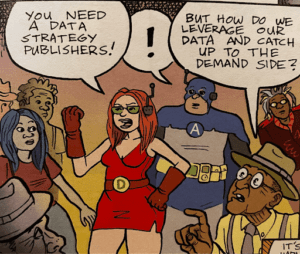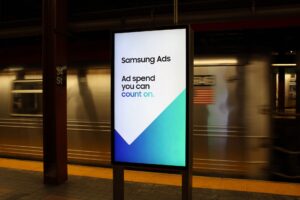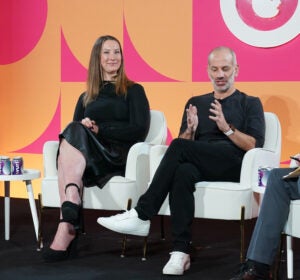“On TV & Video” is a column exploring opportunities and challenges in advanced TV and video.
Today’s column is by Alex Collmer, CEO of VidMob.
We are entering an era of signal loss, in which media targeting will become less effective. Creative will have to pick up the slack.
For the past decade, marketers have dedicated outsized attention and considerable tech resources to optimize audiences, for targeting parameters and to budget allocations across channels.
But three factors – audience, budget and creative – drive positive marketing results, creative being the most important of the three: Google estimates that creative bears 70% of the responsibility for results.
And creative is about to become more important as the privacy landscape changes, with the decline of third-party cookies and Apple’s ATT framework eliminating access to the IDFA.
New technologies and data types are emerging to make this transition smoother. AI and machine learning are powering new tools such as computer vision, optical character recognition and natural language processing that make it possible to unpack many if not all of the creative attributes of any piece of content, frame by frame.
The ability to cross this creative attribute data with performance metrics across the thousands or tens of thousands of a brand’s communications will, for the first time, give marketers insight into the “why” behind 70% of their ad performance.
But while creative insights are interesting, they don’t become valuable until we actually do something with them. Yet doing something with them is particularly challenging in an industry that split apart creative and media 25 years ago, keeping them largely separated to this day.
Undoing the Great Unbundling
When holding companies unbundled creative and media agencies in the mid-1990s, it made a lot of sense. After all, it took months to get media data back. Changing creative similarly took a long time and cost a fortune, so no one did it. Better to split media agencies out and reap the benefits, both cultural and financial.
AdExchanger Daily
Get our editors’ roundup delivered to your inbox every weekday.
Daily Roundup
But that’s no longer the case. Marketers get valuable information back within seconds of launching any campaign today, and they can use creative analytics to identify how specific creative decisions are helping or hurting performance.
To date, they’ve focused their optimization efforts on the media and budget levers – the 30%. As agencies and brands begin to undo the Great Unbundling and bring creative and media back together, emerging technology platforms are enabling brands to optimize creative.
But there’s a lot of confusion in the marketplace about what “data-informed creative” actually is.
Marketers often incorrectly assume that dynamic creative optimization (DCO), which can algorithmically change color palettes, weather settings and calls-to-action, is the only option. DCO is useful in many cases, but it’s no panacea on its own.
If I’m a marketer trying to put forward a unique and emotionally resonant embodiment of my brand, using automated optimization technology alone checks the box for scale. But it may not be the best solution when it comes to differentiation.
A hybrid approach that both taps human creativity and deploys a DCO tool to boost it might be that solution.
How to Get Started
To realize the value inherent in ad creative, an organization needs to do a few things.
First, it needs to understand as a matter of company culture that the focus of the last decade, audience and budget optimization, is not enough.
Second, it needs to build the “creative stack” necessary for accumulating the learnings that come from turning on creative analytics as a new first-party data vector.
And lastly, whether by realigning resources or merely deploying a connective software platform, it needs to link its media resources and creative resources in a symbiotic loop, one that will promote learning and creation.
Creative may drive 70% of ad performance, but it’s historically received far less in data and tech investment. Brands now have the opportunity to change that dynamic, by using data to improve creative decision-making.













